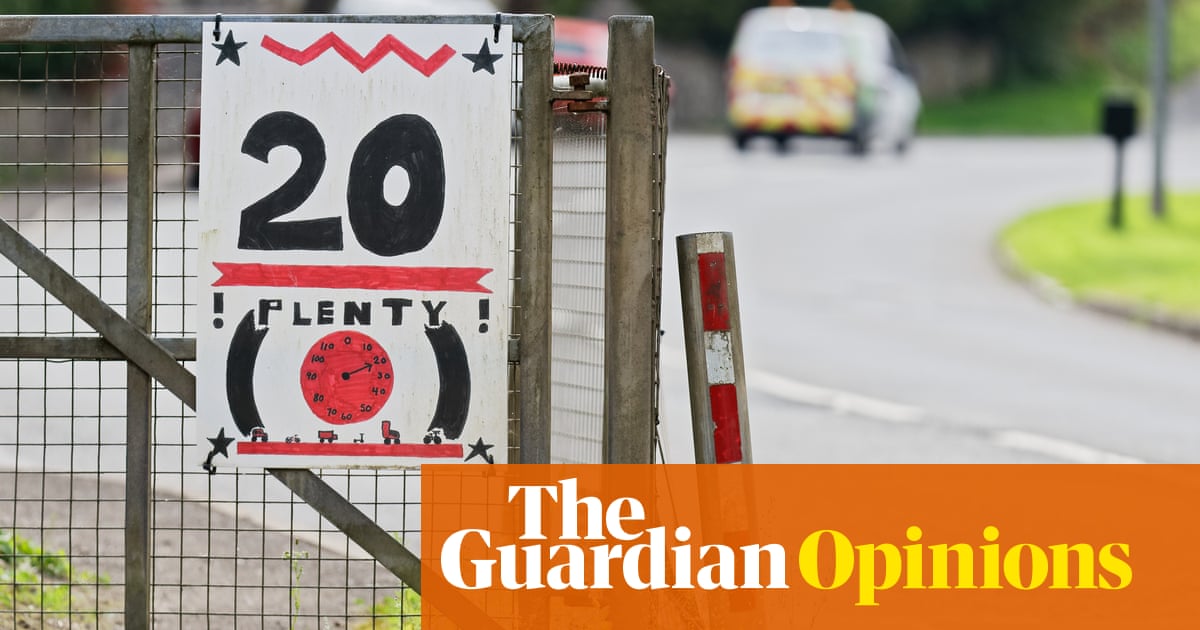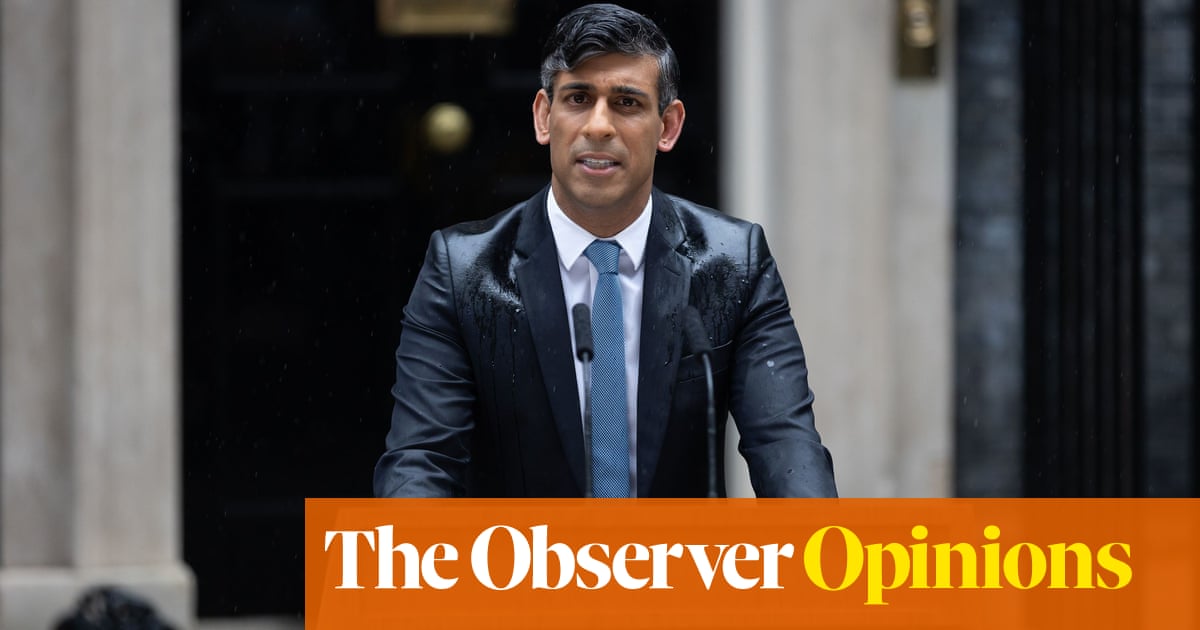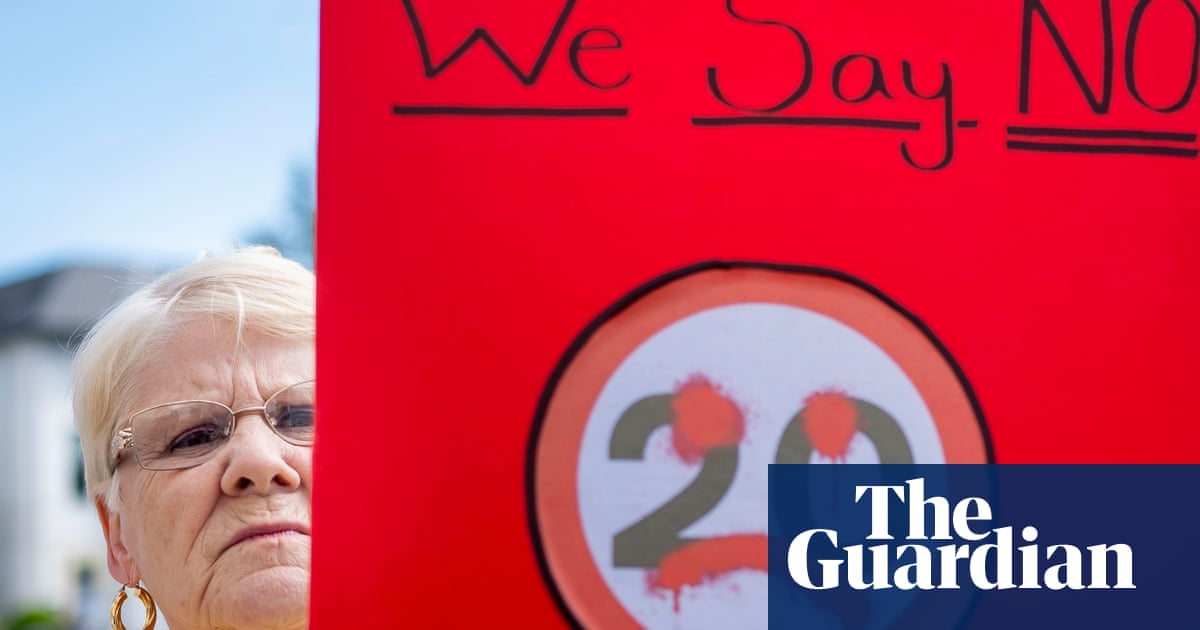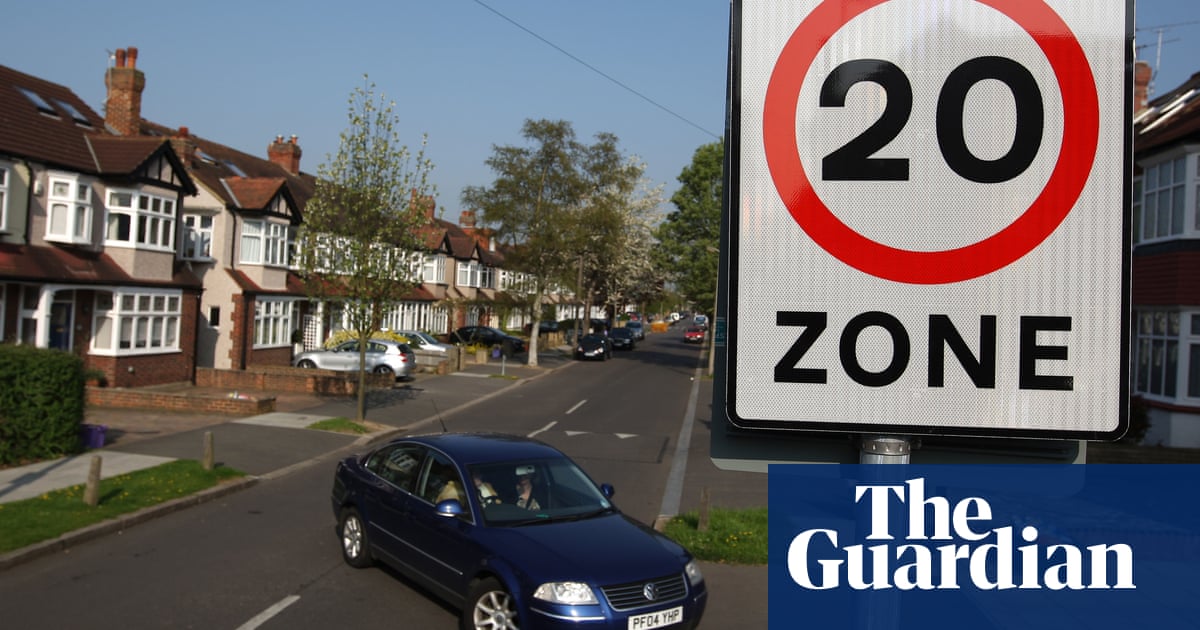
The prime minister, Rishi Sunak, has declared war on the “war on motorists”. He has said that he wants to end “harebrained” schemes for slower speed limits and safer, quieter roads. But history suggests, as I discovered while researching a forthcoming paper for the Foundation for Integrated Transport, in the long term he’s unlikely to succeed in his battle against 20mph zones.
The reason is simple: once people have experienced the benefits of slower speeds in their area, such as less noise and aggro and more child independence and cycling, they typically don’t want to bring the speed limits back up. Campaigns to reduce danger and nuisance from cars in cities have been running since the 1970s – and although they are often controversial, my findings suggest that they typically follow a predictable pattern.
Many actions are launched at the school gate by parents keen to liberate their children to walk or cycle to school without risking death or serious injury from fast traffic (research shows that for every 1mph reduction in average speed on urban roads, collision frequency reduces by about 6%). The trajectory continues upwards as other local groups pitch in and councillors favour residents who vote for them, rather than outsiders driving through.
Then the change sets in. As details emerge of the shape and nature of the slower speed zone, protests begin and reach a peak when the measures are introduced. Public meetings are often dominated by angry drivers protesting their freedom to move swiftly through towns, while councillors hear in the media that they could lose their seats by supporting slower speeds.
Then there’s a crucial moment when councils decide whether to buckle under the barrage of complaints, or stick to their guns. My research suggests that rewards are high for councillors who hold their nerve. Once speed limits are reduced for a year, they tend not to be reversed.
The campaign group 20’s Plenty for Us says that 61 local authorities in England have chosen an authority-wide limit of 20mph for villages and urban areas – and not a single one has reversed its policy. In fact, support for slower speed zones continues to grow as parents, children and others discover that in areas where the limit is enforced, cycling has become a safe option for travel. That means farewell to the taxi of Mum and Dad.
Some drivers remain angry and frustrated – especially on an open stretch of road, or when they’ve just left a motorway, when 20mph can seem ridiculously slow. But many drivers get used to the lower limit, which typically adds just a minute or two to the average journey. The key to fewer delays when travelling in cities lies with traffic lights, not raw speed.
That’s why the 20’s Plenty project is growing. It now claims that the majority of the 40 biggest urban authorities have introduced 20mph zones, and that 28 million people in the UK are living in areas where 20mph is the norm. It is cheaper and easier to install 20mph zones than low traffic neighbourhoods (LTNs) that typically require costly engineering measures.
In Wales, Lee Waters, the minister responsible for the 20mph rollout, cut a reasonable figure defending the policy in an interview with WalesOnline, promising that any roads that failed the “smell test” for 20mph could be pushed back to 30mph by local councils (as they can already under current rules).
And if Sunak aims to curb local councils’ power to set their own limits, he will be pushing against advice from his own Department for Transport that advises traffic authorities to consider the introduction of more 20mph limits and zones – and against the Tory tradition of valuing localised decision-making.
Indeed, 20’s Plenty says some Conservative-controlled councils are among those imposing 20mph zones, from Lancashire to Cornwall, as well as some Tory London boroughs. There’s an ongoing demand for more 20mph limits.
Critics say 20mph zones create more emissions, but that’s rejected by modelling from Future Transport London, which suggests 20mph is about 25% cleaner than 30mph in urban settings – partly because of the extra fuel burned by cars accelerating up to the higher limit, then slowing down again.
Yet, despite the advantages of slower speeds, local campaigners are facing more political pressure than ever, now that LTNs and 20mph zones have been identified by the political right and conspiracy theorists as the latest assault on individual freedom, along with the response to Covid and the climate crisis.
Some of the slower speed advocates in my study are facing extreme distress under the ongoing assault, and this is likely to persist now the prime minister has identified the car – the biggest killer on the roads – as the real victim.
It’s a far cry from March 2020, when the then transport secretary, Grant Shapps, said: “Public transport and active travel will be the natural first choice for our daily activities. We will use our cars less and be able to rely on a convenient, cost-effective and coherent public transport network.”
Rather than put the squeeze on 20mph limits and low-traffic zones, Sunak should deliver on his promise of a single digital parking app to reduce the stress over parking that has grown during his party’s term in office. Now, that is a good idea.
Dr Roger Harrabin is a fellow at St Catharine’s College, Cambridge and a former BBC correspondent












